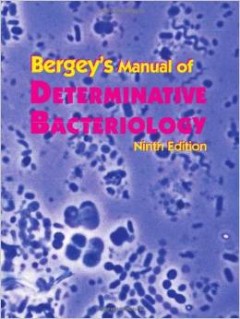Filter by

MITNet: A Fusion Transformer and Convolutional Neural Network Architecture Ap…
"Classifying epitopes is essential since they can be applied in various fields, including therapeutics, diagnostics, and peptide-based vaccines. To determine the epitope or peptide against an antibody, epitope mapping with peptides is the most extensively used method. However, this method is more time-consuming and inefficient than using present methods. The ability to retrieve data on pr…
- Edition
- -
- ISBN/ISSN
- -
- Collation
- -
- Series Title
- -
- Call Number
- BI 23-005

ANN-Based Service Support Chatbot for Lira Medika Hospital
Timely diagnosis is crucial for patients' future care and treatment. However, inadequate medical service or a global pandemic can limit physical contact between patients and healthcare providers. Combining the available healthcare data and artificial intelligence methods might offer solutions that can support both patients and healthcare providers. Artificial neural network (ANN) is one of the …
- Edition
- -
- ISBN/ISSN
- -
- Collation
- -
- Series Title
- -
- Call Number
- BI 22-002

Plant systematics : a phylogenetic approach
A comprehensive introduction to vascular plant phylogeny, the Third Edition of Plant Systematics reflects changes in the circumscription of many orders and families to represent monophyletic groups, following the most recent classification of the Angiosperm Phylogeny Group. The taxonomic evidence described includes data from morphology, anatomy, embryology, chromosomes, palynology, secondary pl…
- Edition
- 3rd edition
- ISBN/ISSN
- 9780878934072
- Collation
- xv, 611 p. : ill. : ind. ; 29 cm.
- Series Title
- -
- Call Number
- 580.12 Jud p

Bergey's manual for determinative bacteriology
Based on the data contained in the four-volume Bergey's Manual of Systematic Bacteriology, BMDB-9 also includes new genera and species, new combinations, and new taxa published through the January 1992 issue of the IJSB. Users will find short general descriptions that encompass all organisms by Groups; shape and size, Gram reaction, other pertinent morphological features, motility and flagella,…
- Edition
- 9th
- ISBN/ISSN
- 9780683006032
- Collation
- xviii, 787 p. : ill. : ind. ; 28 cm.
- Series Title
- -
- Call Number
- 589.9 Hol b

The evolution of phylogenetic systematics
The Evolution of Phylogenetic Systematics aims to make sense of the rise of phylogenetic systematics—its methods, its objects of study, and its theoretical foundations—with contributions from historians, philosophers, and biologists. This volume articulates an intellectual agenda for the study of systematics and taxonomy in a way that connects classification with larger historical themes in…
- Edition
- -
- ISBN/ISSN
- 9780520276581
- Collation
- viii, 311 p. : ill. : ind. ; 24 cm.
- Series Title
- -
- Call Number
- 578.012 Evo

Reconstructing the tree of life : taxonomy and systematics of species rich taxa
- Edition
- -
- ISBN/ISSN
- 9780849395796
- Collation
- 351 p. : ill. : ind. ; 26 cm.
- Series Title
- -
- Call Number
- 578.012 Rec
- Edition
- -
- ISBN/ISSN
- 9780849395796
- Collation
- 351 p. : ill. : ind. ; 26 cm.
- Series Title
- -
- Call Number
- 578.012 Rec

Phylogenetics : theory and practice of phylogenetic systematics
The long-awaited revision of the industry standard on phylogenetics Since the publication of the first edition of this landmark volume more than twenty-five years ago, phylogenetic systematics has taken its place as the dominant paradigm of systematic biology. It has profoundly influenced the way scientists study evolution, and has seen many theoretical and technical advances as the field has …
- Edition
- 2nd
- ISBN/ISSN
- 9780470905968
- Collation
- xvi, 406 p. : ill. : ind. ; 26 cm.
- Series Title
- -
- Call Number
- 578.012 Wil p

Molecular identification, systematics, and population structure of prokaryotes
Systematic biology has a far wider application than merely the provision of a reliable classification scheme for new strains. With the framework of the hierarchic system stabilizing, genomes, noncoding regions, and genes and their products can now be evaluated in an evolutionary context. This book summarizes recent developments in the molecular characterization of cultured and as-yet uncultured…
- Edition
- -
- ISBN/ISSN
- 9783540231554
- Collation
- xiv, 320 p. : ill. : ind. ; 25 cm.
- Series Title
- -
- Call Number
- 579.3 Mol

Modern phylogenetic comparative methods and their application in evolutionary…
Phylogenetic comparative approaches are powerful analytical tools for making evolutionary inferences from interspecific data and phylogenies. The phylogenetic toolkit available to evolutionary biologists is currently growing at an incredible speed, but most methodological papers are published in the specialized statistical literature and many are incomprehensible for the user community. This te…
- Edition
- -
- ISBN/ISSN
- 9783662435496
- Collation
- 552 p. : ill. : ind. ; 24 cm
- Series Title
- -
- Call Number
- 575 Mod

Biological systematics : the state of the art
"Biological Systematics" provides a critical overview of the state of the art in biological systematics and presents a broad perspective of the subject, covering its history, theory and practice. The most improtant current theoretical issues are reviewed with the emphasis on the species concept, the methodology of phylogenetic reconstruction and contrasting views on the relationships between ph…
- Edition
- -
- ISBN/ISSN
- 9780412364402
- Collation
- xvi, 387 p. : ill. : ind. ; 24 cm.
- Series Title
- -
- Call Number
- 574.014 Min b

Bergey's manual of systematic bacteriology : volume two : the proteobacteria …
Includes a description of the Gammaproteobacteria (1203 pages, 222 figures, and 300 tables). This large taxon includes many well known medically and environmentally important groups. Especially notable are the Enterobacteriaceae, Aeromonas, Beggiatoa, Chromatium, Legionella, Nitrococcus, Oceanospirillum, Pseudomonas, Rickettsiella, Vibrio, Xanthomonas and 155 additional genera.
- Edition
- 2nd
- ISBN/ISSN
- 978-0387241449
- Collation
- xxviii, 1106 p. : ill. : ind. ; 29 cm.
- Series Title
- -
- Call Number
- 579.3 Ber

Plant systematics
Plant Systematics has made a substantial contribution to plant systematics courses at the upper-undergraduate and first year graduate level. This second edition continues to provide the basis for teaching an introduction to the morphology, evolution, and classification of land plants. A foundation of the approach, methods, research goals, evidence, and terminology of plant systematics are prese…
- Edition
- 2nd
- ISBN/ISSN
- 9780123743800
- Collation
- xii, 740 p. : ill. : ind. ; 29 cm.
- Series Title
- -
- Call Number
- 580.12 Sim p

Molecular systematics
Molecular systematic methods have been applied in most fields of biology to provide an evolutionary framework whenever comparisons are made among individuals, populations, or higher taxa. The first edition of Molecular Systematics became a standard reference for this vigorous field by describing each aspect of the planning, execution, and analysis of a molecular systematic study. The Second Edi…
- Edition
- 2nd
- ISBN/ISSN
- 9780878932825
- Collation
- xvi, 655 p. : ill. : ind. ; 26 cm.
- Series Title
- -
- Call Number
- 574.88 Mol

Bergey's manual of systematic bacteriology : volume one : the archaea and the…
Bacteriologists from all levels of expertise and within all specialties rely on this Manual as one of the most comprehensive and authoritative works. Since publication of the first edition of the Systematics, the field has undergone revolutionary changes, leading to a phylogenetic classification of prokaryotes based on sequencing of the small ribosomal subunit. The list of validly named species…
- Edition
- 2nd
- ISBN/ISSN
- 9780387987712
- Collation
- xxi, 721 p. : ill. : ind. ; 29 cm.
- Series Title
- -
- Call Number
- 579.3 Ber

Bergey's manual of systematic bacteriology volume two : the proteobacteria pa…
Includes introductory chapters on classification of prokaryotes, the concept of bacterial species, numerical and polyphasic taxonomy, bacterial nomenclature and the etymology of prokaryotic names, nucleic acid probes and their application in environmental microbiology, culture collections, and the intellectual property of prokaryotes. The first Road Map to the prokaryotes is included as well as…
- Edition
- 2nd
- ISBN/ISSN
- 9780387241432
- Collation
- xxvi, 304 p. : ill. ; 28 cm.
- Series Title
- -
- Call Number
- 579.3 Ber
 Computer Science, Information & General Works
Computer Science, Information & General Works  Philosophy & Psychology
Philosophy & Psychology  Religion
Religion  Social Sciences
Social Sciences  Language
Language  Pure Science
Pure Science  Applied Sciences
Applied Sciences  Art & Recreation
Art & Recreation  Literature
Literature  History & Geography
History & Geography